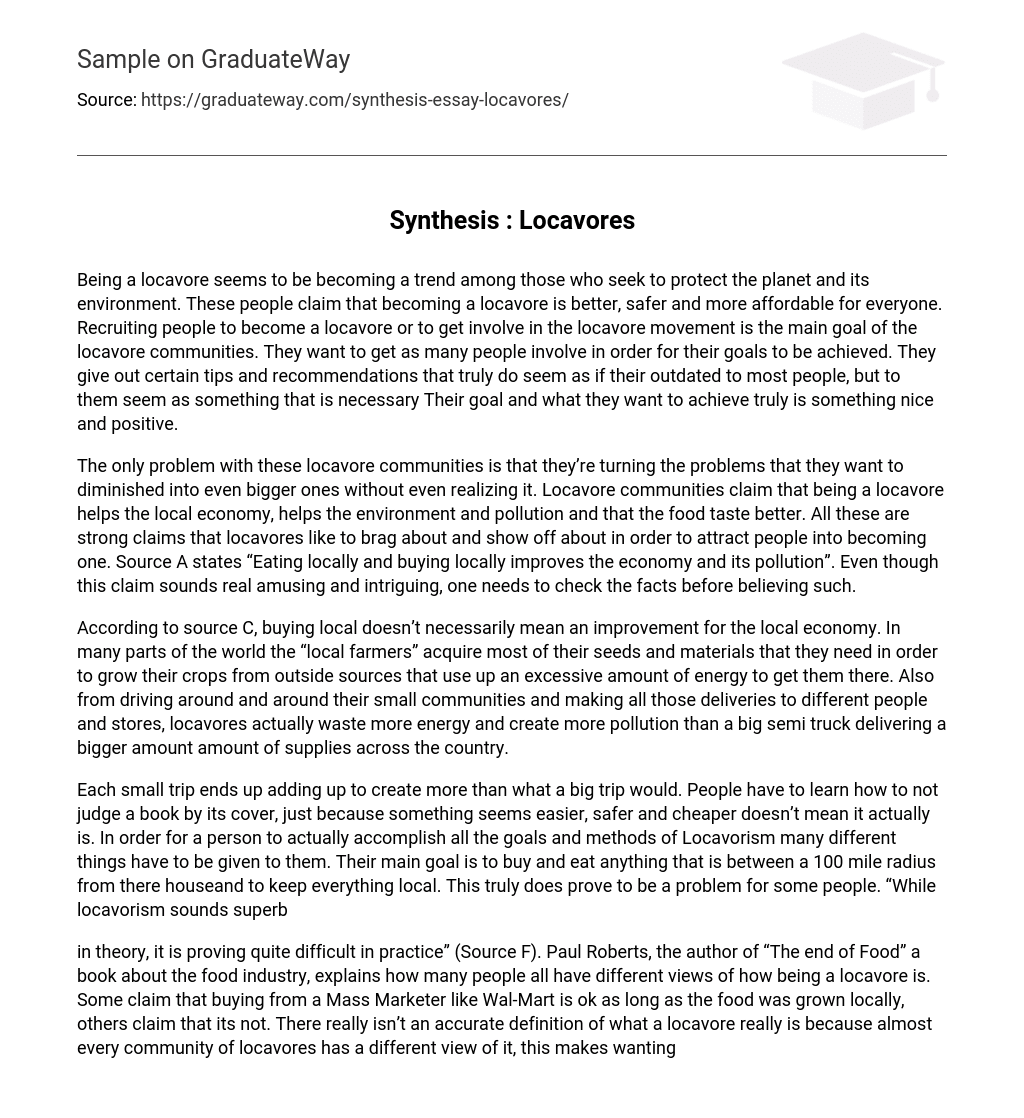Environmental enthusiasts are increasingly embracing the trend of becoming locavores in order to safeguard the planet. They argue that being a locavore not only benefits the environment, but also enhances safety and affordability for everyone. Locavore communities aim to inspire more individuals to participate in this movement by offering tips and recommendations, which may appear outdated to some but are deemed essential by these enthusiasts. Their ultimate objective is to attain positive and advantageous outcomes.
Locavore communities have a problem – they inadvertently exacerbate the very issues they aim to address. These communities assert that being a locavore not only benefits the local economy and environment, but also enhances the taste of food. They proudly promote these assertions to encourage others to join their cause. Source A confirms that “Eating locally and buying locally improves the economy and its pollution.” While this claim may sound compelling, it is crucial to verify the facts before accepting it as true.
According to source C, purchasing products from local suppliers does not always result in a boost to the local economy. Many local farmers rely on external sources for their seeds and materials, which require a significant amount of energy for transportation. Additionally, locavores contribute to energy waste and pollution by repeatedly driving around their communities to make deliveries to various individuals and stores. This can be more environmentally detrimental than a large semi-truck delivering a larger quantity of supplies across the country.
Every small trip contributes to a larger sum, surpassing the impact of a single big trip. It is crucial for individuals to avoid judging based on appearances, as ease, safety, and affordability can be deceptive. To successfully adopt the principles of Locavorism, various factors must be considered. The primary objective is to purchase and consume products within a 100-mile radius of one’s home, emphasizing local sourcing. However, this poses challenges for certain individuals. Although locavorism may seem excellent in theory and practice,
According to Source F, it is proving to be quite challenging to put the concept of being a locavore into practice. In his book “The end of Food,” Paul Roberts discusses how different people have different interpretations of what it means to be a locavore. Some argue that buying locally grown food from a mass marketer like Wal-Mart is acceptable, while others disagree. Due to the lack of a precise definition, each community of locavores has its own perspective, making the goal of becoming a locavore more difficult than anticipated.
Living in a remote area or a place with difficult conditions for plant growth and animal raising poses a challenge. In such cases, the only option is to purchase these essential items. Our bodies require specific vitamins, minerals, and foods to function properly, but often these necessities cannot be naturally grown or produced within a 100-mile radius. Even if they could be produced locally, adhering to locavore principles would mean sacrificing comfort foods.
To summarize, becoming or being a locavore is a challenging endeavor. Despite their intention to support the planet and its environment, locavore communities unknowingly cause more harm to both. The lifestyle of a locavore is not easy and requires constant adaptation to new practices, resulting in sacrificing numerous things. While their way of life may not sound appealing, there are individuals who find it interesting and believe in its effectiveness.





